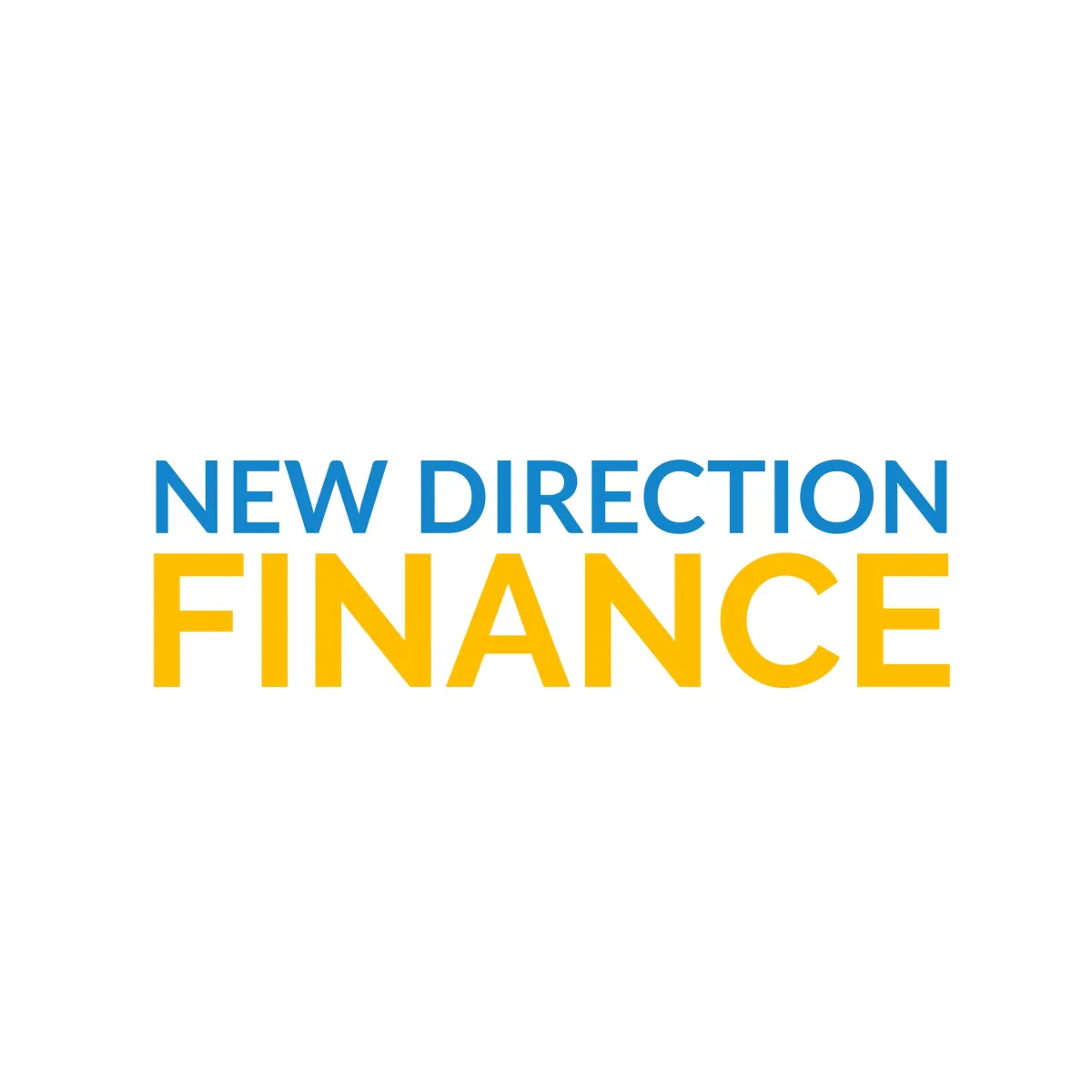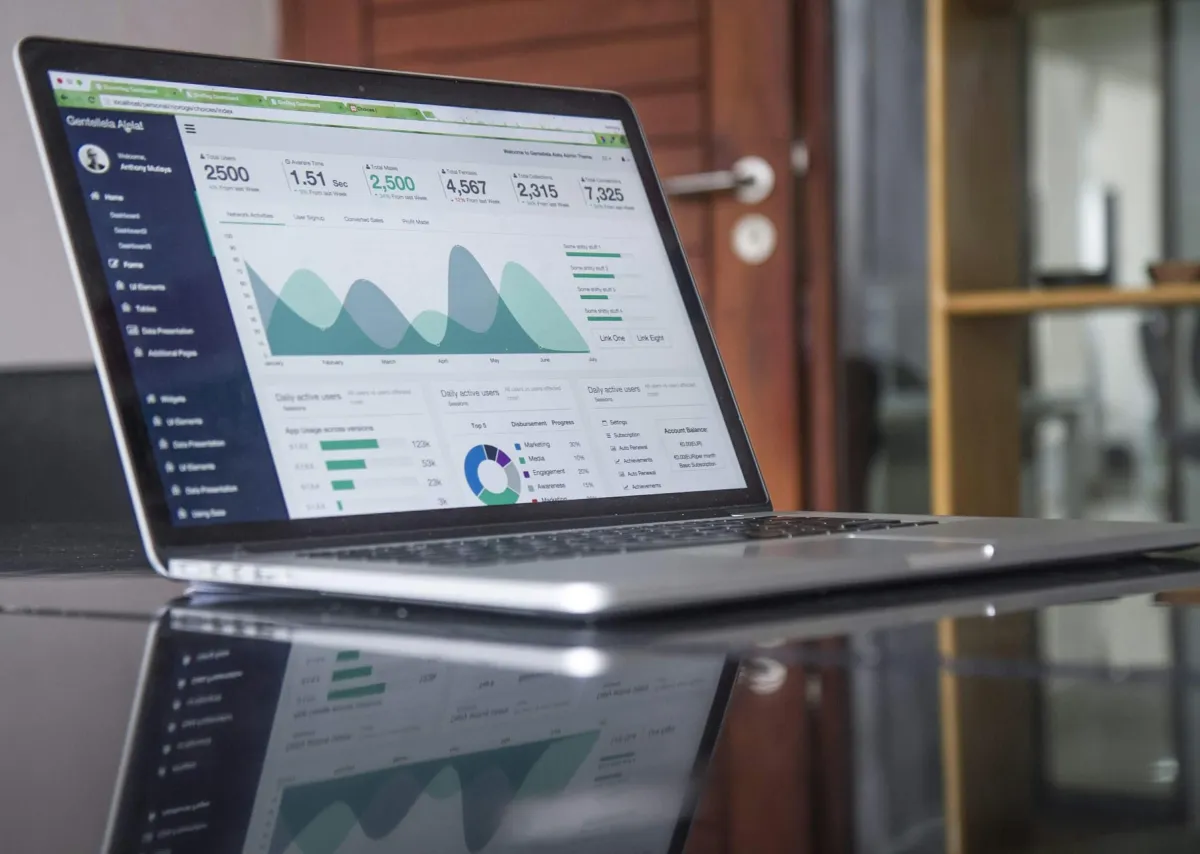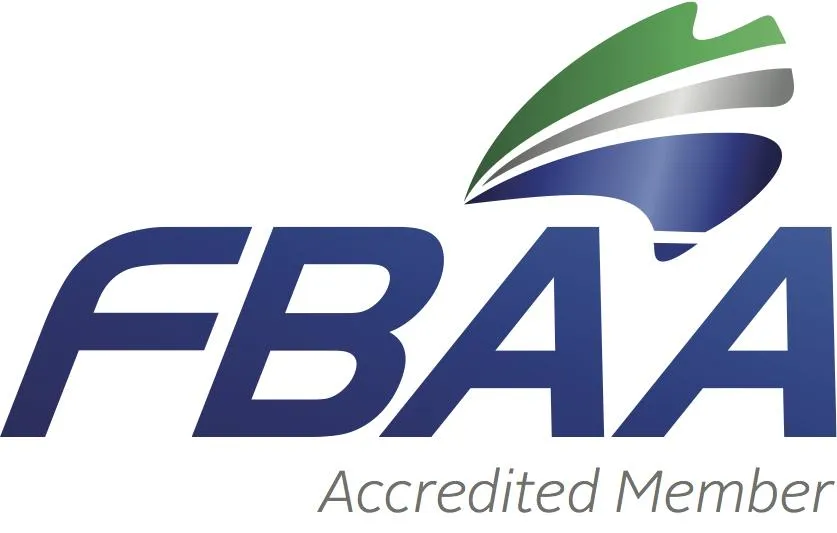Articles to educate, inspire or help your decision process
Australia’s leading broker, New Direction Finance, has the mission of providing our clients with the most up to date information as possible, to assist your decision making process.
Articles to educate, inspire or help your decision process
Australia’s leading broker, New Direction Finance, has the mission of providing our clients with the most up to date information as possible, to assist your decision making process.
Finance fast. Finance simplified
We have the proven experience you can trust, affordable loans, personal financing, vehicle options, and commerical lending.


Simple Applications
Fast Funds


Real Solutions
Funding Options
Feature Articles
How is New Direction Finance Different?

Founded in 2014 to provide real solutions to rising issues in finance industry, New Direction Finance has expanded rapidly into affordable business loans, personal loans, vehicle finance and investment properties
In today’s modern world, it is so easy to accumulate debt beyond repair. This is the reason why the team at New Direction Finance always seeks to provide sound advice on cost-effective, financially viable solutions to all of their trusted clients.
From Stress to Success: How Debt Consolidation Can Improve Cash Flow and Lower Interest Rates
Navigating the complexities of business finance can be overwhelming, especially when juggling multiple debts with varying interest rates and repayment terms. For business owners in Australia, debt consolidation emerges as a powerful strategy to streamline finances, offering a pathway from stress to financial health. By consolidating debts, businesses can potentially lower interest rates, simplify payment processes, and improve cash flow, setting the stage for sustainable growth. This strategic financial maneuver not only eases the burden of managing multiple debts but also offers a clearer perspective on the financial future. Dive into how debt consolidation, including options like private lending
and asset finance, can transform your business's financial landscape and lead to a more prosperous tomorrow.
Understanding Debt Consolidation
Debt consolidation is a financial strategy that can significantly impact a business's financial health. By combining multiple debts into a single loan, companies can simplify their financial obligations and potentially improve their overall financial position.
Simplifying Payment Processes
Debt consolidation streamlines payment processes by combining multiple debts into a single, manageable loan. This simplification can be a game-changer for businesses struggling with multiple creditors and varying due dates.
By consolidating debts, businesses can reduce the administrative burden of managing multiple payments. This often leads to fewer missed payments and late fees, improving the company's credit standing.
According to Smart Business, simplified payment processes can free up valuable time and resources, allowing business owners to focus on core operations and growth strategies.
Lowering Interest Rates
One of the primary benefits of debt consolidation is the potential to secure lower interest rates. This can lead to significant savings over time, especially for businesses carrying high-interest debt.
By consolidating debts, businesses may qualify for better rates based on their overall financial picture. This is particularly true if the company's credit score has improved since initially taking on the debts.
Aquamore notes that lower interest rates can dramatically reduce the total cost of debt over time, freeing up capital for reinvestment in the business.
Improving Cash Flow
Debt consolidation can have a positive impact on a business's cash flow by reducing monthly outgoings and creating more predictable payment schedules.
With a single, potentially lower monthly payment, businesses can allocate funds more effectively. This improved cash flow can be crucial for managing day-to-day operations and seizing growth opportunities.
As highlighted by Fundz
, better cash flow management is essential for navigating economic uncertainties and maintaining business stability.
Benefits of Debt Consolidation
Debt consolidation offers numerous advantages beyond just simplifying finances. It can pave the way for long-term financial health and business growth.
Streamlined Finances
Streamlining finances through debt consolidation can bring clarity and efficiency to a business's financial management.
By consolidating multiple debts into one, businesses gain a clearer picture of their financial obligations. This transparency makes budgeting and financial planning more straightforward and accurate.
CFO Dynamics emphasizes that streamlined finances enable better decision-making and resource allocation, crucial for business success.
Simplified financial structures also make it easier to track progress towards financial goals and identify areas for improvement.
Path to Sustainable Growth
Debt consolidation can create a solid foundation for sustainable business growth by freeing up resources and improving financial stability.
With reduced financial stress and improved cash flow, businesses can focus on strategic initiatives and investments that drive growth.
Prime Financial suggests that the improved financial position resulting from debt consolidation can make businesses more attractive to investors and lenders, opening up new growth opportunities.
Strengthening Financial Future
By addressing debt challenges head-on, businesses can strengthen their financial future and build resilience against economic uncertainties.
Debt consolidation often leads to improved credit scores over time, which can open doors to better financing options in the future.
As noted by New Direction Finance, a stronger financial position enables businesses to weather economic downturns more effectively and capitalize on opportunities as they arise.
Effective Strategies for Australian Businesses
Australian businesses have several effective strategies at their disposal when it comes to debt consolidation, including leveraging private lending and exploring asset finance options.
Leveraging Private Lending
Private lending can be a valuable tool for businesses looking to consolidate debt, offering flexibility and potentially faster approval processes compared to traditional banks.
Private lenders like Homesec
often have more flexible lending criteria, making them accessible to businesses that might not qualify for conventional loans.
These lenders can offer tailored solutions that align with a business's specific needs and financial situation, potentially leading to more favorable terms.
However, it's crucial to carefully evaluate the terms and conditions of private lending options, as interest rates may be higher than traditional bank loans in some cases.
Exploring Asset Finance Option
Asset finance presents another strategic approach to debt consolidation, allowing businesses to leverage their existing assets to secure more favorable lending terms.
Scotpac Business Finance specializes in asset-based lending, which can be an effective way for businesses to access funds for debt consolidation while retaining ownership of their assets.
This approach can be particularly beneficial for businesses with valuable equipment or property, as it often leads to lower interest rates compared to unsecured loans.
Asset finance can also provide a pathway to debt consolidation for businesses that might struggle to qualify for traditional loans based solely on their credit history.

F
New Car Options 2025

As we move through 2025, the Australian automotive market is witnessing a significant transformation, with manufacturers introducing a variety of new vehicles that cater to evolving consumer preferences and stricter emission standards. Here's an overview of some notable new car options available to Australian buyers this year.
Kia has unveiled the Tasman, a mid-size pickup truck built on a body-on-frame chassis. Designed with significant input from Kia Australia, the Tasman aims to capture around 10% of the pickup truck market. It offers both petrol and turbo-diesel four-cylinder engines, with a braked towing capacity of 3,500 kg and a payload of approximately 1,000 kg. The interior boasts modern features such as a triple-screen layout and sustainable materials.
Wikipedia
Chinese automaker BYD has introduced the Shark 6, a plug-in hybrid electric vehicle (PHEV) ute. With an 80 km electric-only range before switching to its petrol engine, the Shark 6 provides a blend of efficiency and practicality. Priced at $57,900, it comes equipped with luxury features and has already garnered nearly 1,000 pre-orders, indicating strong interest in hybrid utes.
The Guardian
BYD is also set to launch the Sealion 7, a mid-sized electric SUV poised to challenge models like the Tesla Model Y. Expected to be priced around $55,000, the Sealion 7 offers a spacious, tech-rich interior with features such as a rotating infotainment screen and over-the-air software updates. Available in both single and dual-motor configurations, it aims to provide substantial power and range, making it a compelling option in the electric SUV segment.
The GWM Cannon Alpha Ultra Hybrid combines technology and luxury in a hybrid ute offering. Priced at $62,990 drive-away, it features nappa leather seats, a 14.6-inch touchscreen, heated and cooled front seats with massage functions, and a 10-speaker stereo system. While not the most fuel-efficient option, it provides a comfortable ride and is suitable for off-road use, appealing to those seeking both utility and comfort.
The Toyota Hilux continues to be a strong contender in the Australian ute market. Known for its durability and reliability, the 2025 model offers updated features and improved performance, maintaining its appeal among both commercial users and families seeking a robust vehicle.
These new models reflect the industry's shift towards more sustainable and technologically advanced vehicles, providing Australian consumers with a diverse range of options to suit various preferences and needs.
Are You ready now to buy that new vehicle? Click Here to apply
Sources Toyota, GWM, Kia, BYD
Personal Loans

Personal loans have become an integral financial tool for many Australians, offering flexibility to manage expenses, consolidate debt, or fund significant life events. As of 2025, the landscape of personal lending in Australia presents both opportunities and challenges for consumers.
Current Trends in Personal Lending
Recent data indicates a notable increase in the reliance on unsecured financial products, including personal loans. Approximately 45% of Australians have utilized personal loans for daily expenses in the past three months, with a 70% surge in loan applications among individuals aged 35 and under.
This trend underscores the financial pressures faced by households, prompting many to seek credit solutions to manage rising living costs.
Diverse Lending Options
The Australian market offers a variety of personal loan providers, ranging from traditional banks to emerging digital lenders:
Traditional Banks: Established institutions like HSBC Bank Australia provide a range of personal loan products, benefiting from their extensive experience and comprehensive financial services. Digital Banks: Innovative digital banks such as Alex Bank have entered the market, offering streamlined online personal loan services. Founded in 2018, Alex Bank obtained a full authorized deposit-taking license in December 2022, reflecting its commitment to expanding its financial offerings. Non-Bank Lenders: Companies like Wisr provide unsecured personal loans with flexible terms, catering to a broad spectrum of borrowers. Wisr has distinguished itself by eliminating establishment fees and offering competitive interest rates. Wikipedia
Financial Challenges and Considerations
While personal loans can offer immediate financial relief, they also come with risks:
Debt Accumulation: Mismanagement of personal loans can lead to substantial debt. For instance, individuals have reported accumulating debts exceeding $70,000 due to unchecked borrowing and spending habits. The increasing reliance on credit indicates growing financial anxiety among Australians, particularly younger demographics. This trend highlights the need for improved financial literacy and responsible borrowing practices.
Strategies for Responsible Borrowing
To navigate the personal loan landscape effectively, consider the following strategies:
Debt Consolidation: Combining multiple debts into a single loan can simplify repayments and potentially reduce interest costs. Developing a comprehensive budget and setting clear financial goals can help manage loan repayments and prevent financial stress. Seeking advice from financial counselors can provide personalized strategies for debt management and financial stability.
In conclusion, personal loans in Australia serve as valuable financial instruments when used responsibly. Understanding the current trends, available lending options, and potential risks is crucial for making informed borrowing decisions that align with individual financial circumstances.
Ready to apply for a personal loan
H2
Equipment Finance

Equipment finance plays a pivotal role in supporting Australian businesses by enabling them to acquire essential machinery, vehicles, and technology without the immediate financial burden of outright purchases. This financial strategy allows companies to maintain cash flow while ensuring they have the necessary tools to operate efficiently and competitively.
Current Trends in Equipment Finance
Despite economic uncertainties, there has been a notable increase in demand for equipment financing in Australia. The Commonwealth Bank reported a 15% rise in vehicle and equipment financing, indicating that businesses are proactively upgrading assets to enhance productivity. Sectors such as manufacturing, healthcare, and education are leading this trend, reflecting a commitment to modernization and efficiency.
Government Initiatives and Support
The Australian government has introduced several initiatives to encourage the adoption of energy-efficient equipment. A notable example is the allocation of $50 million to subsidize electric vehicle (EV) loans for farmers and truck drivers. This program aims to reduce interest costs for eligible borrowers, promoting the transition to cleaner technologies in key industries.
News.com.au Additionally, a $160 million investment into a Westpac fund offers discounted loans for home energy efficiency upgrades, underscoring the government's commitment to sustainable practices across various sectors. The Guardian
Considerations for Businesses
When exploring equipment finance options, businesses should consider the following factors:
Interest Rates and Terms: Comparing rates and contract terms is crucial to ensure the financing aligns with the company's financial strategy.Tax Implications: Understanding the tax benefits or obligations associated with different financing arrangements can impact the overall cost-effectiveness. Aligning the financing term with the expected useful life of the equipment ensures that payments do not extend beyond the asset's productive period. Choosing a reputable finance provider with a track record of transparent dealings and customer support can mitigate potential risks.
In conclusion, equipment finance remains a vital mechanism for Australian businesses aiming to modernize operations and maintain competitiveness. By leveraging tailored financing solutions and government initiatives, companies can effectively manage capital expenditure while adopting the latest technologies and equipment.
New Direction Finance are specialists in Equipment Finance Click Here to apply
6 Tips to Help ABN Holders Qualify for a Vehicle Loan
For many Australian Business Number (ABN) holders, securing a vehicle loan can be more challenging than it is for traditional salaried employees. Lenders often require a higher level of financial transparency and stability from business owners and freelancers. By following these six tips, you can strengthen your application and increase your chances of loan approval.
1. Save a Deposit
A sizable deposit can make your loan application more attractive to lenders. Saving for a deposit not only lowers the total amount you need to borrow but also demonstrates your financial discipline and commitment. A higher deposit reduces the risk for the lender, potentially leading to better interest rates and loan terms.
2. Establish Strong Financial Anchors
Lenders look for solid evidence of financial stability. As an ABN holder, you can build your case by showcasing consistent income streams and long-term contracts or client relationships. These “anchors” help prove that your business generates reliable revenue. In addition, having a good credit history and clear records of past financial performance reinforces your credibility as a low-risk borrower.
3. Separate Business and Personal Banking
Maintaining distinct banking accounts for your business and personal finances is essential. When your financial records are separated, it becomes easier for lenders to assess your business performance and cash flow. A dedicated business account shows professionalism, simplifies bookkeeping, and makes it more straightforward to produce the necessary financial documents during the loan application process.
4. Register for GST
Registering for the Goods and Services Tax (GST) not only complies with Australian tax laws (if your turnover exceeds the threshold) but also enhances your business’s credibility. Being GST-registered signals to lenders that you are serious about your business operations and are meeting all regulatory obligations. This can be a positive factor when they evaluate the sustainability of your income.
5. Manage Your Banking Diligently
Good banking habits are critical for a successful loan application. Lenders will scrutinise your bank statements to assess cash flow, spending habits, and overall financial management. Regularly reconciling your accounts, keeping accurate records, and demonstrating consistent profitability are practices that will improve your financial profile. Consistent and well-managed banking records provide concrete evidence of your ability to manage a vehicle loan responsibly.
6. Choose a Work Vehicle
Opting for a vehicle that is clearly used for business purposes can be beneficial when applying for a loan. A work vehicle is often more justifiable as a business expense, which can help when calculating depreciation and tax deductions. Moreover, lenders may view the purchase of a work vehicle as a strategic investment into your business, rather than a personal luxury, thereby reducing perceived risk.
Conclusion
Qualifying for a vehicle loan as an ABN holder requires a proactive approach. By saving for a deposit, establishing strong financial anchors, keeping business and personal finances separate, registering for GST, managing your banking effectively, and choosing a work vehicle, you can present a well-organised and robust financial profile. These steps not only improve your chances of loan approval but also contribute to the overall health and credibility of your business.
Taking these steps can help you secure better loan terms, ensuring that you have the right vehicle to support your business growth and daily operations.
Building Business Credit for Loans and Financing

For small and medium-sized businesses, access to business credit, loans, and financing solutions can be crucial for ensuring long-term success. Having access to working capital allows businesses to manage ongoing operational expenses while exploring opportunities for growth and expansion. However, not all SME owners and managers fully understand business credit – how it works, why it is essential, and how to build it effectively.
Understanding Business Credit
Business credit is a measure of the creditworthiness of your business. In other words, it reflects how risky a lender considers your business to be. It is distinct and separate from personal credit and is used by lenders, investors, and vendors to assess whether to extend a line of credit or engage in business with you. Even if you are not planning on applying for a business loan in the immediate future, a strong business credit profile offers numerous advantages:
Secure favorable trade, loan, and interest rate terms. Negotiate better payment terms with suppliers. Attract more investors and greater investment opportunities. Negotiate lower insurance premiums .Separate personal and business finances more effectively.
Factors Impacting Business Credit
1. Payment History
Your business’s payment history is a cornerstone of a strong credit profile. Ensuring that customers or clients pay bills on time – or early – demonstrates reliability and financial stability to potential lenders.
2. Credit Utilisation
The amount of credit your business is using compared to the credit limit extended determines your utilization rate. A lower credit utilization ratio (ideally 30% or less) indicates responsible credit management and financial stability.
3. Credit History
The length of your business credit history can significantly impact your credit score. A well-established credit history strengthens your financial profile, while a limited or weak history may make securing future loans more challenging. New businesses and start-ups can find this a hurdle, but alternative financial options exist to help build credit beyond conventional business loans.
4. Credit Mix
Businesses with a diverse range of credit types—such as credit cards and term loans—can enhance their credit profile. This variety demonstrates to lenders that your business can handle different financial obligations responsibly.
Strategies for Building Strong Business Credit
Avoid Late Payments
Timely loan repayments are crucial. Even a single late repayment can significantly impact your credit score and remain on your report for years.
Maintain Low Credit Utilisation
Avoid maxing out business lines of credit, as high credit utilization can indicate financial struggles. Keeping utilization low allows flexibility for short-term increases when needed while maintaining a strong credit profile.
Limit Excessive Credit Inquiries
While exploring multiple financing options is important, excessive inquiries—especially with a low credit score—can suggest financial distress to potential lenders. Research thoroughly before formally applying for a loan.
Maintain a Strong Business Reputation
Beyond financial records, lenders consider public records such as legal disputes or bankruptcies. Negative public records can remain on reports for up to 10 years, making financing difficult.
Utilise Credit Diversity
Mixing different credit types—such as responsibly using a business credit card—can improve your credit profile and demonstrate financial reliability.
Invest in Building Strong Networks
Cultivating relationships with lenders and vendors can provide valuable advice and assistance. Strong business connections can help secure financing solutions when needed .By understanding and strategically managing these factors, SMEs can build strong business credit, access better financing options, and support long-term growth and stability.

Invoice Finance
Unlock Your Cash Flow: How Invoice Finance Can Boost Your Business
In the bustling landscape of Australian business, maintaining a healthy cash flow is a key concern for many small to medium-sized enterprises. Invoice finance emerges as a robust financial solution, offering a lifeline to those grappling with delayed payments and the unpredictability of cash flow management. By leveraging unpaid invoices, businesses can unlock immediate funds, freeing up resources to focus on growth without the looming worry of financial strain. Whether you're a start-up or a seasoned business owner, understanding how to choose the right invoice finance provider can make all the difference in navigating towards sustainable success. Join us as we delve into the world of invoice finance and uncover how it can transform your business's financial health.
Understanding Invoice Finance
Invoice finance is a powerful tool for Australian businesses looking to improve their cash flow. Let's explore what it is, how it works, and the benefits it offers.
What is Invoice Finance?
Invoice finance is a financial solution that allows businesses to access funds tied up in unpaid invoices. It's a way to unlock cash that would otherwise be unavailable until customers pay their bills.
This type of financing is particularly useful for businesses that experience cash flow gaps due to long payment terms or seasonal fluctuations in demand .By leveraging invoice finance, companies can maintain steady cash flow, invest in growth opportunities, and manage day-to-day operations more effectively.
How Invoice Finance Works
The process of invoice finance is straightforward and can be broken down into several steps:
A business provides goods or services to its customers and issues invoices. The business submits these invoices to an invoice finance provider. The provider advances a percentage of the invoice value, typically 80-90%, within 24-48 hours. The customer pays the invoice according to the agreed terms. Once the customer pays, the finance provider releases the remaining balance, minus their fee.
This system allows businesses to access funds quickly without waiting for lengthy payment terms to expire. It's important to note that invoice finance is not a loan. Instead, it's an advance on money that is already owed to the business.
Benefits for Australian Businesses
Invoice finance offers numerous advantages for Australian businesses across various sectors. Here are some key benefits: Improved cash flow: By receiving payment for invoices upfront, businesses can better manage their working capital and meet financial obligations. Flexibility: Unlike traditional loans, invoice finance grows with your business, providing more funding as your sales increase. Reduced risk: Some invoice finance arrangements include credit control services, helping to mitigate the risk of bad debts. Additionally, invoice finance can help businesses take advantage of early payment discounts from suppliers, potentially leading to cost savings.
Enhancing Cash Flow Management
Effective cash flow management is crucial for business success. Invoice finance provides a powerful tool to leverage unpaid invoices and improve overall financial health.
Unpaid Invoices Leverage
Unpaid invoices represent a significant asset for many businesses. Invoice finance allows companies to tap into this resource, converting outstanding invoices into immediate working capital. By leveraging unpaid invoices, businesses can bridge the gap between delivering goods or services and receiving payment. This can be particularly beneficial for industries with long payment cycles or seasonal fluctuations. Moreover, this approach can help businesses maintain positive relationships with customers by allowing them to offer competitive payment terms without compromising their own cash flow.
Business Financing Options
Invoice finance is one of several business financing options available to Australian companies. Here's how it compares to other common financing methods: Financing Method Speed of Access Collateral Required Impact on Balance Sheet Invoice Finance Fast (24-48 hrs)Invoices Off-balance sheet Bank Loans Slow (weeks)Various assets On-balance sheet Overdraft Medium Sometimes On-balance sheet Equity Financing Very slow None No debt incurred As shown, invoice finance offers a unique combination of speed and flexibility, making it an attractive option for many businesses. It's important to consider your specific business needs and financial situation when choosing between these options.
Improve Business Cash Flow
Improving business cash flow is a top priority for many Australian companies. Invoice finance can play a crucial role in this process by:
Providing immediate access to funds tied up in unpaid invoices Reducing the impact of late payments on business operations Enabling businesses to take advantage of growth opportunities without waiting for customer payments
By implementing invoice finance, businesses can create a more predictable cash flow cycle, making it easier to plan for future expenses and investments .Additionally, improved cash flow can lead to better supplier relationships, as businesses are able to pay their own bills on time consistently.
Choosing an Invoice Finance Provider
Selecting the right invoice finance provider is crucial for maximizing the benefits of this financial solution. Let's explore key considerations and strategies for making the best choice.
Key Considerations
When evaluating invoice finance providers, several factors should be taken into account: Fees and charges: Understand the full cost structure, including any hidden fees or charges that may apply. Advance rates: Compare the percentage of invoice value that different providers are willing to advance. Flexibility: Look for providers that offer scalable solutions that can grow with your business. Customer service is another crucial factor. A provider with responsive, knowledgeable staff can make a significant difference in your experience. It's also important to consider the provider's reputation and track record in the Australian market.
Strategic Insights for Selection
When selecting an invoice finance provider, consider these strategic insights:
Assess your business needs: Understand your cash flow patterns and financing requirements to choose a provider that aligns with your needs. Compare multiple providers: Don't settle for the first option. Compare services, rates, and terms from several providers. Check for industry expertise: Some providers specialize in certain sectors. A provider with experience in your industry may offer more tailored solutions. Consider technology integration: Look for providers with user-friendly platforms that can integrate with your accounting software. Read the fine print: Carefully review all terms and conditions to avoid surprises down the line
.
Supporting Business Growth
The right invoice finance provider can be a valuable partner in supporting your business growth. Here's how:
Scalability: As your business grows and generates more invoices, your funding can increase proportionally .Strategic advice: Many providers offer insights and guidance on financial management and growth strategies. Additional services: Some providers offer complementary services like credit control or debtor insurance, which can further support your business.
By choosing a provider that aligns with your growth objectives, you can ensure that invoice finance remains a valuable tool as your business evolves. Remember, the goal is to find a provider that not only meets your current needs but can also adapt to your future requirements.
How is New Direction Finance Different?
Founded in 2014 to provide real solutions to rising issues in finance industry, New Direction Finance has expanded rapidly into affordable business loans, personal loans, vehicle finance and investment properties
In today’s modern world, it is so easy to accumulate debt beyond repair. This is the reason why the team at New Direction Finance always seeks to provide sound advice on cost-effective, financially viable solutions to all of their trusted clients.
New Car Options 2025
As we move through 2025, the Australian automotive market is witnessing a significant transformation, with manufacturers introducing a variety of new vehicles that cater to evolving consumer preferences and stricter emission standards. Here's an overview of some notable new car options available to Australian buyers this year.
Kia has unveiled the Tasman, a mid-size pickup truck built on a body-on-frame chassis. Designed with significant input from Kia Australia, the Tasman aims to capture around 10% of the pickup truck market. It offers both petrol and turbo-diesel four-cylinder engines, with a braked towing capacity of 3,500 kg and a payload of approximately 1,000 kg. The interior boasts modern features such as a triple-screen layout and sustainable materials.
Chinese automaker BYD has introduced the Shark 6, a plug-in hybrid electric vehicle (PHEV) ute. With an 80 km electric-only range before switching to its petrol engine, the Shark 6 provides a blend of efficiency and practicality. Priced at $57,900, it comes equipped with luxury features and has already garnered nearly 1,000 pre-orders, indicating strong interest in hybrid utes.
The Guardian
BYD is also set to launch the Sealion 7, a mid-sized electric SUV poised to challenge models like the Tesla Model Y. Expected to be priced around $55,000, the Sealion 7 offers a spacious, tech-rich interior with features such as a rotating infotainment screen and over-the-air software updates. Available in both single and dual-motor configurations, it aims to provide substantial power and range, making it a compelling option in the electric SUV segment.
News.com.au
The GWM Cannon Alpha Ultra Hybrid combines technology and luxury in a hybrid ute offering. Priced at $62,990 drive-away, it features leather seats, a 14.6-inch touchscreen, heated and cooled front seats with massage functions, and a 10-speaker stereo system. While not the most fuel-efficient option, it provides a comfortable ride and is suitable for off-road use, appealing to those seeking both utility and comfort.
couriermail.com.au
The Toyota HiLux continues to be a strong contender in the Australian ute market. Known for its durability and reliability, the 2025 model offers updated features and improved performance, maintaining its appeal among both commercial users and families seeking a robust vehicle.
These new models reflect the industry's shift towards more sustainable and technologically advanced vehicles, providing Australian consumers with a diverse range of options to suit various preferences and needs.
Are You ready now to buy that new vehicle?
Sources Kia, BYD, Toyota, GWM
Personal Loans
Personal loans have become an integral financial tool for many Australians, offering flexibility to manage expenses, consolidate debt, or fund significant life events. As of 2025, the landscape of personal lending in Australia presents both opportunities and challenges for consumers.
Current Trends in Personal Lending
Recent data indicates a notable increase in the reliance on unsecured financial products, including personal loans. Approximately 45% of Australians have utilized personal loans for daily expenses in the past three months, with a 70% surge in loan applications among individuals aged 35 and under.
This trend underscores the financial pressures faced by households, prompting many to seek credit solutions to manage rising living costs.
Diverse Lending Options
The Australian market offers a variety of personal loan providers, ranging from traditional banks to emerging digital lenders:
Traditional Banks: Established institutions like HSBC Bank Australia provide a range of personal loan products, benefiting from their extensive experience and comprehensive financial services. Digital Banks: Innovative digital banks such as Alex Bank have entered the market, offering streamlined online personal loan services. Founded in 2018, Alex Bank obtained a full authorized deposit-taking license in December 2022, reflecting its commitment to expanding its financial offerings. Non-Bank Lenders: Companies like Wisr provide unsecured personal loans with flexible terms, catering to a broad spectrum of borrowers. Wisr has distinguished itself by eliminating establishment fees and offering competitive interest rates. Wikipedia
Financial Challenges and Considerations
While personal loans can offer immediate financial relief, they also come with risks:
Debt Accumulation: Mismanagement of personal loans can lead to substantial debt. For instance, individuals have reported accumulating debts exceeding $70,000 due to unchecked borrowing and spending habits. The increasing reliance on credit indicates growing financial anxiety among Australians, particularly younger demographics. This trend highlights the need for improved financial literacy and responsible borrowing practices.
Strategies for Responsible Borrowing
To navigate the personal loan landscape effectively, consider the following strategies:
Debt Consolidation: Combining multiple debts into a single loan can simplify repayments and potentially reduce interest costs. Developing a comprehensive budget and setting clear financial goals can help manage loan repayments and prevent financial stress. Seeking advice from financial counselors can provide personalized strategies for debt management and financial stability.
In conclusion, personal loans in Australia serve as valuable financial instruments when used responsibly. Understanding the current trends, available lending options, and potential risks is crucial for making informed borrowing decisions that align with individual financial circumstances.
Ready to apply for a personal loan Click Here
H2
Equipment Finance
Equipment finance plays a pivotal role in supporting Australian businesses by enabling them to acquire essential machinery, vehicles, and technology without the immediate financial burden of outright purchases. This financial strategy allows companies to maintain cash flow while ensuring they have the necessary tools to operate efficiently and competitively.
Current Trends in Equipment Finance
Despite economic uncertainties, there has been a notable increase in demand for equipment financing in Australia. The Commonwealth Bank reported a 15% rise in vehicle and equipment financing, indicating that businesses are proactively upgrading assets to enhance productivity. Sectors such as manufacturing, healthcare, and education are leading this trend, reflecting a commitment to modernization and efficiency.
Government Initiatives and Support
The Australian government has introduced several initiatives to encourage the adoption of energy-efficient equipment. A notable example is the allocation of $50 million to subsidize electric vehicle (EV) loans for farmers and truck drivers. This program aims to reduce interest costs for eligible borrowers, promoting the transition to cleaner technologies in key industries.
News.com.au
Additionally, a $160 million investment into a Westpac fund offers discounted loans for home energy efficiency upgrades, underscoring the government's commitment to sustainable practices across various sectors. The Guardian
Considerations for Businesses
When exploring equipment finance options, businesses should consider the following factors:
Interest Rates and Terms: Comparing rates and contract terms is crucial to ensure the financing aligns with the company's financial strategy. Tax
Implications: Understanding the tax benefits or obligations associated with different financing arrangements can impact the overall cost-effectiveness. Aligning the financing term with the expected useful life of the equipment ensures that payments do not extend beyond the asset's productive period. Choosing a reputable finance provider with a track record of transparent dealings and customer support can mitigate potential risks.
In conclusion, equipment finance remains a vital mechanism for Australian businesses aiming to modernize operations and maintain competitiveness. By leveraging tailored financing solutions and government initiatives, companies can effectively manage capital expenditure while adopting the latest technologies and equipment.
New Direction Finance are specialists in Equipment Finance Click Here to apply
6 Tips to Help ABN Holders Qualify for a Vehicle Loan
For many Australian Business Number (ABN) holders, securing a vehicle loan can be more challenging than it is for traditional salaried employees. Lenders often require a higher level of financial transparency and stability from business owners and freelancers. By following these six tips, you can strengthen your application and increase your chances of loan approval.
1. Save a Deposit
A sizable deposit can make your loan application more attractive to lenders. Saving for a deposit not only lowers the total amount you need to borrow but also demonstrates your financial discipline and commitment. A higher deposit reduces the risk for the lender, potentially leading to better interest rates and loan terms.
2. Establish Strong Financial Anchors
Lenders look for solid evidence of financial stability. As an ABN holder, you can build your case by showcasing consistent income streams and long-term contracts or client relationships. These “anchors” help prove that your business generates reliable revenue. In addition, having a good credit history and clear records of past financial performance reinforces your credibility as a low-risk borrower.
3. Separate Business and Personal Banking
Maintaining distinct banking accounts for your business and personal finances is essential. When your financial records are separated, it becomes easier for lenders to assess your business performance and cash flow. A dedicated business account shows professionalism, simplifies bookkeeping, and makes it more straightforward to produce the necessary financial documents during the loan application process.
4. Register for GST
Registering for the Goods and Services Tax (GST) not only complies with Australian tax laws (if your turnover exceeds the threshold) but also enhances your business’s credibility. Being GST-registered signals to lenders that you are serious about your business operations and are meeting all regulatory obligations. This can be a positive factor when they evaluate the sustainability of your income.
5. Manage Your Banking Diligently
Good banking habits are critical for a successful loan application. Lenders will scrutinise your bank statements to assess cash flow, spending habits, and overall financial management. Regularly reconciling your accounts, keeping accurate records, and demonstrating consistent profitability are practices that will improve your financial profile. Consistent and well-managed banking records provide concrete evidence of your ability to manage a vehicle loan responsibly.
6. Choose a Work Vehicle
Opting for a vehicle that is clearly used for business purposes can be beneficial when applying for a loan. A work vehicle is often more justifiable as a business expense, which can help when calculating depreciation and tax deductions. Moreover, lenders may view the purchase of a work vehicle as a strategic investment into your business, rather than a personal luxury, thereby reducing perceived risk.
Conclusion
Qualifying for a vehicle loan as an ABN holder requires a proactive approach. By saving for a deposit, establishing strong financial anchors, keeping business and personal finances separate, registering for GST, managing your banking effectively, and choosing a work vehicle, you can present a well-organised and robust financial profile. These steps not only improve your chances of loan approval but also contribute to the overall health and credibility of your business.
Taking these steps can help you secure better loan terms, ensuring that you have the right vehicle to support your business growth and daily operations.
Building Business Credit for Loans and Financing

For small and medium-sized businesses, access to business credit, loans, and financing solutions can be crucial for ensuring long-term success. Having access to working capital allows businesses to manage ongoing operational expenses while exploring opportunities for growth and expansion. However, not all SME owners and managers fully understand business credit – how it works, why it is essential, and how to build it effectively.
Understanding Business Credit
Business credit is a measure of the creditworthiness of your business. In other words, it reflects how risky a lender considers your business to be. It is distinct and separate from personal credit and is used by lenders, investors, and vendors to assess whether to extend a line of credit or engage in business with you .Even if you are not planning on applying for a business loan in the immediate future, a strong business credit profile offers numerous advantages:
Secure favorable trade, loan, and interest rate terms. Negotiate better payment terms with suppliers. Attract more investors and greater investment opportunities. Negotiate lower insurance premiums. Separate personal and business finances more effectively.
Factors Impacting Business Credit
1. Payment History
Your business’s payment history is a cornerstone of a strong credit profile. Ensuring that customers or clients pay bills on time – or early – demonstrates reliability and financial stability to potential lenders.
2. Credit Utilisation
The amount of credit your business is using compared to the credit limit extended determines your utilization rate. A lower credit utilization ratio (ideally 30% or less) indicates responsible credit management and financial stability.
3. Credit History
The length of your business credit history can significantly impact your credit score. A well-established credit history strengthens your financial profile, while a limited or weak history may make securing future loans more challenging. New businesses and start-ups can find this a hurdle, but alternative financial options exist to help build credit beyond conventional business loans.
4. Credit Mix
Businesses with a diverse range of credit types—such as credit cards and term loans—can enhance their credit profile. This variety demonstrates to lenders that your business can handle different financial obligations responsibly.
Strategies for Building Strong Business Credit
Avoid Late Payments
Timely loan repayments are crucial. Even a single late repayment can significantly impact your credit score and remain on your report for years.
Maintain Low Credit Utilisation
Avoid maxing out business lines of credit, as high credit utilization can indicate financial struggles. Keeping utilization low allows flexibility for short-term increases when needed while maintaining a strong credit profile.
Limit Excessive Credit Inquiries
While exploring multiple financing options is important, excessive inquiries—especially with a low credit score—can suggest financial distress to potential lenders. Research thoroughly before formally applying for a loan.
Maintain a Strong Business Reputation
Beyond financial records, lenders consider public records such as legal disputes or bankruptcies. Negative public records can remain on reports for up to 10 years, making financing difficult.
Utilise Credit Diversity
Mixing different credit types—such as responsibly using a business credit card—can improve your credit profile and demonstrate financial reliability.
Invest in Building Strong Networks
Cultivating relationships with lenders and vendors can provide valuable advice and assistance. Strong business connections can help secure financing solutions when needed. By understanding and strategically managing these factors, SMEs can build strong business credit, access better financing options, and support long-term growth and stability.

Invoice Finance
Unlock Your Cash Flow: How Invoice Finance Can Boost Your Business
In the bustling landscape of Australian business, maintaining a healthy cash flow is a key concern for many small to medium-sized enterprises. Invoice finance emerges as a robust financial solution, offering a lifeline to those grappling with delayed payments and the unpredictability of cash flow management. By leveraging unpaid invoices, businesses can unlock immediate funds, freeing up resources to focus on growth without the looming worry of financial strain. Whether you're a start-up or a seasoned business owner, understanding how to choose the right invoice finance provider can make all the difference in navigating towards sustainable success. Join us as we delve into the world of invoice finance and uncover how it can transform your business's financial health.
Understanding Invoice Finance
Invoice finance is a powerful tool for Australian businesses looking to improve their cash flow. Let's explore what it is, how it works, and the benefits it offers.
What is Invoice Finance?
Invoice finance is a financial solution that allows businesses to access funds tied up in unpaid invoices. It's a way to unlock cash that would otherwise be unavailable until customers pay their bills. This type of financing is particularly useful for businesses that experience cash flow gaps due to long payment terms or seasonal fluctuations in demand. By leveraging invoice finance, companies can maintain steady cash flow, invest in growth opportunities, and manage day-to-day operations more effectively.
How Invoice Finance Works
The process of invoice finance is straightforward and can be broken down into several steps:
A business provides goods or services to its customers and issues invoices. The business submits these invoices to an invoice finance provider. The provider advances a percentage of the invoice value, typically 80-90%, within 24-48 hours. The customer pays the invoice according to the agreed terms. Once the customer pays, the finance provider releases the remaining balance, minus their fee.
This system allows businesses to access funds quickly without waiting for lengthy payment terms to expire. It's important to note that invoice finance is not a loan. Instead, it's an advance on money that is already owed to the business.
Benefits for Australian Businesses
Invoice finance offers numerous advantages for Australian businesses across various sectors. Here are some key benefits: Improved cash flow: By receiving payment for invoices upfront, businesses can better manage their working capital and meet financial obligations. Flexibility: Unlike traditional loans, invoice finance grows with your business, providing more funding as your sales increase. Reduced risk: Some invoice finance arrangements include credit control services, helping to mitigate the risk of bad debts. Additionally, invoice finance can help businesses take advantage of early payment discounts from suppliers, potentially leading to cost savings.
Enhancing Cash Flow Management
Effective cash flow management is crucial for business success. Invoice finance provides a powerful tool to leverage unpaid invoices and improve overall financial health.
Unpaid Invoices Leverage
Unpaid invoices represent a significant asset for many businesses. Invoice finance allows companies to tap into this resource, converting outstanding invoices into immediate working capital. By leveraging unpaid invoices, businesses can bridge the gap between delivering goods or services and receiving payment. This can be particularly beneficial for industries with long payment cycles or seasonal fluctuations. Moreover, this approach can help businesses maintain positive relationships with customers by allowing them to offer competitive payment terms without compromising their own cash flow.
Business Financing Options
Invoice finance is one of several business financing options available to Australian companies. Here's how it compares to other common financing methods: Financing Method Speed of Access Collateral Required Impact on Balance Sheet Invoice Finance Fast (24-48 hrs)Invoices Off-balance sheet Bank Loans Slow (weeks)Various assets On-balance sheet Overdraft Medium Sometimes On-balance sheet Equity Financing Very slow None No debt incurred As shown, invoice finance offers a unique combination of speed and flexibility, making it an attractive option for many businesses .It's important to consider your specific business needs and financial situation when choosing between these options.
Improve Business Cash Flow
Improving business cash flow is a top priority for many Australian companies. Invoice finance can play a crucial role in this process by:
Providing immediate access to funds tied up in unpaid invoices Reducing the impact of late payments on business operations Enabling businesses to take advantage of growth opportunities without waiting for customer payments
By implementing invoice finance, businesses can create a more predictable cash flow cycle, making it easier to plan for future expenses and investments. Additionally, improved cash flow can lead to better supplier relationships, as businesses are able to pay their own bills on time consistently
Choosing an Invoice Finance Provider
Selecting the right invoice finance provider is crucial for maximizing the benefits of this financial solution. Let's explore key considerations and strategies for making the best choice.
Key Considerations
When evaluating invoice finance providers, several factors should be taken into account: Fees and charges: Understand the full cost structure, including any hidden fees or charges that may apply .Advance rates: Compare the percentage of invoice value that different providers are willing to advance. Flexibility: Look for providers that offer scalable solutions that can grow with your business. Customer service is another crucial factor. A provider with responsive, knowledgeable staff can make a significant difference in your experience. It's also important to consider the provider's reputation and track record in the Australian market.
Strategic Insights for Selection
When selecting an invoice finance provider, consider these strategic insights:
Assess your business needs: Understand your cash flow patterns and financing requirements to choose a provider that aligns with your needs. Compare multiple providers: Don't settle for the first option. Compare services, rates, and terms from several providers. Check for industry expertise: Some providers specialize in certain sectors. A provider with experience in your industry may offer more tailored solutions. Consider technology integration: Look for providers with user-friendly platforms that can integrate with your accounting software. Read the fine print: Carefully review all terms and conditions to avoid surprises down the line.
Supporting Business Growth
The right invoice finance provider can be a valuable partner in supporting your business growth. Here's how:
Scalability: As your business grows and generates more invoices, your funding can increase proportionally. Strategic advice: Many providers offer insights and guidance on financial management and growth strategies. Additional services: Some providers offer complementary services like credit control or debtor insurance, which can further support your business.
By choosing a provider that aligns with your growth objectives, you can ensure that invoice finance remains a valuable tool as your business evolves. Remember, the goal is to find a provider that not only meets your current needs but can also adapt to your future requirements.
Source: www.newdirectionfinance.com.au
From Stress to Success: How Debt Consolidation Can Improve Cash Flow and Lower Interest Rates
Navigating the complexities of business finance can be overwhelming, especially when juggling multiple debts with varying interest rates and repayment terms. For business owners in Australia, debt consolidation emerges as a powerful strategy to streamline finances, offering a pathway from stress to financial health. By consolidating debts, businesses can potentially lower interest rates, simplify payment processes, and improve cash flow, setting the stage for sustainable growth. This strategic financial maneuver not only eases the burden of managing multiple debts but also offers a clearer perspective on the financial future. Dive into how debt consolidation, including options like
and asset finance, can transform your business's financial landscape and lead to a more prosperous tomorrow.
Understanding Debt Consolidation
Debt consolidation is a financial strategy that can significantly impact a business's financial health. By combining multiple debts into a single loan, companies can simplify their financial obligations and potentially improve their overall financial position.
Simplifying Payment Processes
Debt consolidation streamlines payment processes by combining multiple debts into a single, manageable loan. This simplification can be a game-changer for businesses struggling with multiple creditors and varying due dates.
By consolidating debts, businesses can reduce the administrative burden of managing multiple payments. This often leads to fewer missed payments and late fees, improving the company's credit standing.
According to Smart Business, simplified payment processes can free up valuable time and resources, allowing business owners to focus on core operations and growth strategies.
Lowering Interest Rates
One of the primary benefits of debt consolidation is the potential to secure lower interest rates. This can lead to significant savings over time, especially for businesses carrying high-interest debt.
By consolidating debts, businesses may qualify for better rates based on their overall financial picture. This is particularly true if the company's credit score has improved since initially taking on the debts.
Aquamore notes that lower interest rates can dramatically reduce the total cost of debt over time, freeing up capital for reinvestment in the business.
Improving Cash Flow
Debt consolidation can have a positive impact on a business's cash flow by reducing monthly outgoings and creating more predictable payment schedules.
With a single, potentially lower monthly payment, businesses can allocate funds more effectively. This improved cash flow can be crucial for managing day-to-day operations and seizing growth opportunities.
As highlighted by Fundz
, better cash flow management is essential for navigating economic uncertainties and maintaining business stability.
Benefits of Debt Consolidation
Debt consolidation offers numerous advantages beyond just simplifying finances. It can pave the way for long-term financial health and business growth.
Streamlined Finances
Streamlining finances through debt consolidation can bring clarity and efficiency to a business's financial management.
By consolidating multiple debts into one, businesses gain a clearer picture of their financial obligations. This transparency makes budgeting and financial planning more straightforward and accurate.
CFO Dynamics emphasizes that streamlined finances enable better decision-making and resource allocation, crucial for business success.
Simplified financial structures also make it easier to track progress towards financial goals and identify areas for improvement.
Path to Sustainable Growth
Debt consolidation can create a solid foundation for sustainable business growth by freeing up resources and improving financial stability.
With reduced financial stress and improved cash flow, businesses can focus on strategic initiatives and investments that drive growth.
Prime Financial suggests that the improved financial position resulting from debt consolidation can make businesses more attractive to investors and lenders, opening up new growth opportunities.
Strengthening Financial Future
By addressing debt challenges head-on, businesses can strengthen their financial future and build resilience against economic uncertainties.
Debt consolidation often leads to improved credit scores over time, which can open doors to better financing options in the future.
As noted by New Direction Finance, a stronger financial position enables businesses to weather economic downturns more effectively and capitalize on opportunities as they arise.
Effective Strategies for Australian Businesses
Australian businesses have several effective strategies at their disposal when it comes to debt consolidation, including leveraging private lending and exploring asset finance options.
Leveraging Private Lending
Private lending can be a valuable tool for businesses looking to consolidate debt, offering flexibility and potentially faster approval processes compared to traditional banks.
Private lenders like Homesec
often have more flexible lending criteria, making them accessible to businesses that might not qualify for conventional loans.
These lenders can offer tailored solutions that align with a business's specific needs and financial situation, potentially leading to more favorable terms.
However, it's crucial to carefully evaluate the terms and conditions of private lending options, as interest rates may be higher than traditional bank loans in some cases.
Exploring Asset Finance Options
Asset finance presents another strategic approach to debt consolidation, allowing businesses to leverage their existing assets to secure more favorable lending terms.
specializes in asset-based lending, which can be an effective way for businesses to access funds for debt consolidation while retaining ownership of their assets.
This approach can be particularly beneficial for businesses with valuable equipment or property, as it often leads to lower interest rates compared to unsecured loans.
Asset finance can also provide a pathway to debt consolidation for businesses that might struggle to qualify for traditional loans based solely on their credit history.


Need vehicle finance?
we have you covered for business or personal.
We access to a huge range of specially designed products from our full panel of lenders.
In most cases we beat the banks and motor vehicle dealers and can arrange loans for all vehicle types for business or personal vehicles. Even if you are credit impaired we can arrange finance for you.

Private Funding
Need access to private funding?
Private funding offers a dynamic avenue for businesses to secure capital beyond traditional sources like banks.
Private funding comes from individual investors, venture capitalists, or private equity firms. This alternative route provides greater flexibility, speed, and tailored solutions to fuel various business
By tapping into the power of private funding, you can get a personalized financial approach.
Free Private Funding Guide
The Ultimate Private Funding Guide
Gain insights and understanding of private funding with our free ebook, 'The Ultimate Guide to Private Funding.'
Discover what private funding is, the criteria and the best use cases and success stories needed to make informed decisions about your financial future."

Free Private Funding Guide
The Ultimate Private Funding Guide
Gain insights and understanding of private funding with our free ebook, 'The Ultimate Guide to Private Funding.'
Discover what private funding is, the criteria and the best use cases and success stories needed to make informed decisions about your financial future."


Business Loans
Keep your business moving
Our range of business loan options keeps your business moving, providing the funds quickly and without the endless paperwork required by the major banks.
We get you the funds you need, when you need them, and with as little paperwork as possible.

Need a Personal Loan?
Access funds for any purpose, fast.
Get access to funds for any personal purpose, whether it's a holiday, consolidating debt, paying tax bills or just completing those renovations around the house, we have you covered with loans both secured or unsecured.
Lenders
Just some of our Lenders
With access to one of the largest lender panels in Australia, we have the options to get you the funds when you need them.
This is just a sampling of the lenders we have access too for our clients.

Equipment finance
Get the equipment you need
Equipment finance provides businesses with the means to acquire necessary machinery and assets without the burden of upfront costs.
Through various financing options available to us like leasing or hire purchase, you can access essential equipment while conserving capital and maintaining cash flow.
This enables you to stay competitive and efficient with state-of-the-art equipment without the financial strain of outright purchasing. With tailored solutions to fit your specific needs, equipment finance can fuel your growth.

Get your funds fast, without all the paperwork.
Contact Us.
Here is Our;
Important legal stuff
Terms / Conditions / Disclaimer
New Direction Finance (ACN 16 727 63 06), Australian Credit Representative Number is 499888 authorised under Australian Credit Licence 540930 We will never sell your email address to any third party or send you nasty spam, promise.
New Direction Finance is a privately owned and operated Australian business.
*WARNING:
All applications are subject to assessment and lender approval. Quoted rates apply to personal loans unsecured loans and all applications are subject to assessment and lender approval.
IMPORTANT INFORMATION:
Loan terms differ and subject to lender and credit criteria. Any calculations or estimated savings do not constitute an offer of credit or a credit quote and are only an estimate of what you may be able to achieve based on the accuracy of the information provided. It doesn’t take into account any product features or any applicable fees. Our lending criteria and the basis upon which we assess what you can afford may change at any time without notice.. All applications for credit are subject to lender credit approval criteria.© New Direction Finance 2025
Website Created and managed by Customli.io, Copyright 2025
Contact Us.

Important legal stuff
Terms / Conditions / Disclaimer
New Direction Finance (ACN 16 727 63 06), Australian Credit Representative Number is 540930 authorised under Australian Credit Licence 383999. We will never sell your email address to any third party or send you nasty spam, promise.
New Direction Finance is a privately owned and operated Australian business.
*WARNING:
Any comparison rates are true only for the examples given and may not include all fees and charges. Different terms, fees or other loan amounts might result in a different comparison rate.. Fees and charges apply. All applications are subject to assessment and lender approval. Quoted rates apply to personal loans unsecured loans and all applications are subject to assessment and lender approval.
IMPORTANT INFORMATION:
Loan terms differ and subject to lender and credit criteria. Any calculations or estimated savings do not constitute an offer of credit or a credit quote and are only an estimate of what you may be able to achieve based on the accuracy of the information provided. It doesn’t take into account any product features or any applicable fees. Our lending criteria and the basis upon which we assess what you can afford may change at any time without notice. All applications for credit are subject to lender credit approval criteria.© New Direction Finance 2025


Facebook
Instagram
LinkedIn
Youtube
TikTok